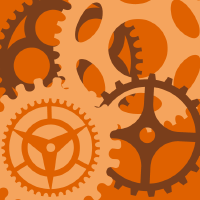Topic Menu
► Topic MenuTopic Editors




Surface Treatments for Protecting from Fracture and Fatigue Damage II
Topic Information
Dear Colleagues,
We would like to invite you to submit your work to this Topic on "Surface Treatments for Protecting from Fracture and Fatigue Damage". The topic is very popular in many engineering applications and affects the structural integrity of a number of critical components and structures spanning different scale lengths, from nano to macro-structures.
The present issue aims to offer a complete update on these interesting subjects, evaluating different aspects of the problem.
The topic will serve as a forum for papers on the following subjects:
- Innovative coatings.
- Innovative and sustainable treatments for improving surface properties.
- Methods for monitoring the properties of the surfaces under service conditions.
- Innovative methodologies for applying protective and coatings and re-integration materials to structures.
- Innovative and sustainable surface treatments against fatigue damage.
- Case studies on innovative and sustainable coatings and surface protection.
- Applications to real structures.
Dr. Ricardo Branco
Prof. Dr. Filippo Berto
Prof. Dr. Francesco Iacoviello
Dr. José António Correia
Topic Editors
Participating Journals
| Journal Name | Impact Factor | CiteScore | Launched Year | First Decision (median) | APC |
|---|---|---|---|---|---|

Applied Mechanics
|
- | 2.3 | 2020 | 23.1 Days | CHF 1200 |

Applied Sciences
|
2.5 | 5.3 | 2011 | 18.4 Days | CHF 2400 |

Coatings
|
2.9 | 5.0 | 2011 | 14.5 Days | CHF 2600 |

Materials
|
3.1 | 5.8 | 2008 | 13.9 Days | CHF 2600 |

Metals
|
2.6 | 4.9 | 2011 | 17.8 Days | CHF 2600 |

MDPI Topics is cooperating with Preprints.org and has built a direct connection between MDPI journals and Preprints.org. Authors are encouraged to enjoy the benefits by posting a preprint at Preprints.org prior to publication:
- Immediately share your ideas ahead of publication and establish your research priority;
- Protect your idea from being stolen with this time-stamped preprint article;
- Enhance the exposure and impact of your research;
- Receive feedback from your peers in advance;
- Have it indexed in Web of Science (Preprint Citation Index), Google Scholar, Crossref, SHARE, PrePubMed, Scilit and Europe PMC.

